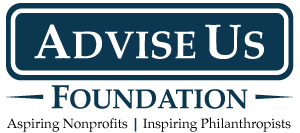
by Rosalyn Lambert | Apr 22, 2015 | Charitable Remainder Trust, Donor Intent, Donor-Advised Funds, Featured |
Bequests are the third highest source of income for charity totaling $28 billion in 2013. While big bequests going to big nonprofits may make news, the average bequest is between $35,000 and $75,000 according to 2011 research by Blackbaud, Inc.* That’s funding that can make a big difference for a small- or mid-sized charity’s mission – especially when numerous donors give. While any charity can receive a bequest – smart charities try to improve their chances. Why? Because becoming a bequest successor is a real commitment from your donor –a vote of confidence in your mission. Financially it funds your mission now and later. Most people understand eventual bequest funding, but fewer understand what it means now. Donors who make bequest commitments average more than double the annual gifts of other donors. Even donors just considering a bequest give over 25% more annually than those who aren’t considering a bequest. As Emily Krauser points out in her groundbreaking research “For a fund raiser, being named in a donor’s will is a great way to build lifetime commitment to an organization. Increasing the number of individuals with a charity named in their wills not only will increase the future dollar amount given by bequest, but may also increase donor loyalty and inter-vivos giving [i.e. giving during the donor’s lifetime].” Bequest donors are among your most important donors – or they can be, if you cultivate them. Read on for ways you can improve your bequest program. [If you don’t have a bequest program it’s easy to start one and we can help (contact us) – it’s part of our charitable...

by Hiram Wurf | Mar 17, 2015 | Donor Intent, Donor-Advised Funds, Featured |
Nonprofit general operating support gives mission-critical funding. While nonprofits often welcome program-specific support, program funding often drains other resources. Without enough unrestricted support nonprofit operations are less effective and successful. Increasingly charity associations, funders, and media advocates believe nonprofits need more general operating funds than they receive to achieve their mission. Seven Reasons Nonprofits Need General Operating Support Why do charities need unrestricted support? In many cases general operating funds not only keep the lights on – they also contribute to the effectiveness of charity program development and implementation. Here are seven reasons why nonprofits need unrestricted support. Fostering financial sustainability and capacity building; Strengthening donor and charity relationships and trust; Providing flexibility to efficiently and effectively meet charitable missions; Promoting mission-focused work using core capabilities and strengths; Permitting better long-term planning; Easing administrative burdens for charities and in some cases donors; and Establishing broad, mission-based outcome accountability. Just like other organizations, nonprofits need funding responsive to their unique needs. Donors Contributing to General Operating Support Perhaps aware of these concerns, in recent years some donors have increased their gifts for unrestricted support. One study of foundations found that from 2008 to 2014 the percentage of grant dollars going to general operating costs grew from 20% to 25%. Donor-advised fund donors often provide more unrestricted support than foundations. This may reflect a difference in giving culture. While some donor-advised funds solicit grants and have staff with program expertise focused on grants, most do not. Donor-advised fund donors tend to base grant advisement decisions on personal charitable experiences. These donors often volunteer individually or as a family at charities they...

by Andrew Hibel | Feb 25, 2015 | Donor Intent, Donor-Advised Funds, Featured |
Recently, the Chronicle of Philanthropy released their Philanthropy 400 that included a number of high ranking donor-advised funds. This led to positive and negative reviews of the growth and place of donor advised funds in charitable giving. It’s a great time to take up this discussion because donor-advised funds have reached a crossroads in the charitable community – and we must choose their future path. At its essence a donor-advised fund is uniquely able to separate the tax efficient portion of charitable giving from the granting portion of the gift. Often marketers of donor advised funds – coming from professional investment backgrounds – like to sandwich these two features around what happens between them (i.e. investing the funds that have already been contributed to charity) to create what I call the “features sandwich” of donor advised funds – Give. Grow. Grant. The discussion of donor advised funds today has too much energy placed on the features of investment and tax deduction. While investment and tax deduction features are essential to planning the gift, they are not the benefits donors receive from a fund. Changing the “grow” of the features sandwich to “guide”, and moving the discussion from investments to stewardship, sets us on the path of reclaiming the donor-advised fund as a leading gift planning vehicle focused on charitable intent. Give. Guide. Grant. This “benefits sandwich” focuses charities (which all donor-advised fund purveyors are legally required to be) on providing unique benefits as stewards and grant makers. It offers us a chance to discuss the following incredible gift planning benefits that donor advised funds can offer donors: Timing –...

by Rosalyn Lambert | Jan 13, 2015 | Donor Intent, Donor-Advised Funds, Featured |
In my life as a development officer I hated donor-advised funds. I felt they took money from my mission, made me miss out on my goals and just made things difficult. Who were these people with their funds – and how could I find them? As donor-advised funds have grown more popular – and I have become more familiar with them – I’ve moved from respect to real appreciation. I see donor-advised funds in an entirely new light because I better understand their important role – and potential – in charitable giving. Let’s address common criticisms first. Common Criticisms Money (That’s What I Want) I agree donor-advised funds seem like a charitable bank account or just a financial tool that saves taxes. But the overall annual rate of donor-advised fund contributions – the “payout rate” to charity – regularly exceeds the payout from private foundations. Sometimes the donor-advised fund payout rate is more than double the amount that private foundations donate with their 5% minimum. Waiting on a Friend If your concern is waiting for the money, then you should know in practice donor-advised funds compare favorably with many types of charitable giving vehicles, including private foundations, charitable remainder trusts and charitable lead trusts. In fact, many donor advised funds – including The Advise Us Fund – have rules that require donors to make advisements at least annually. Good Times Bad Times When it comes to tough financial times, think of donor-advised funds as deep pockets that keep our nonprofit missions motoring. In fact, donors often give more to donor-advised funds when they have an economic windfall, like a...

by Hiram Wurf | Jul 4, 2014 | Donor Intent, Featured |
This week on July 4th we celebrate Independence Day – the birth of American democracy. The day the people of the United States of America declared the “self-evident truth” of each individual’s equality and birthright of “Life, Liberty and the pursuit of Happiness.” Like democracy, charity predates America’s birth – and like democracy the American experience has changed charity, evolving our understanding of the philanthropic enterprise, with lasting international impact. While the American founding was not thought of as a “charitable enterprise” what is surprising is how much American charity, and international charity, has nonetheless followed the “self-evident truths” of our birth. The act of donating is itself an expression of donors “pursuing their happiness” – seeking those causes they are most passionate about – and establishing their legacy through their support. What better describes our charitable giving practices than championing greater equality through funding educational opportunity or seeking social justice; or giving to food, shelter and health care programs that support the life of our fellow citizens, while developing self-reliance and independence that promote their liberty; or charitably funding arts, cultural and educational institutions and experiences that allow individuals the pursuit of happiness. Yet as we take pause to celebrate our legacy – let us not just celebrate the charitable successes of the past, but also look to those in our future. One hundred years ago on July 4th President Woodrow Wilson said at Independence Hall in Philadelphia, “Liberty does not consist, my fellow-citizens, in mere general declarations of the rights of man. It consists in the translation of those declarations into definite action. Therefore, standing here where...






